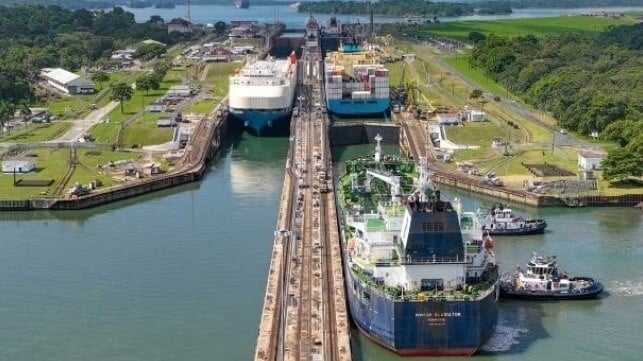Panama Canal Continues to Restore Capacity After Drought

The Panama Canal Authority scheduled further efforts designed to increase capacity and reduce some of the restrictions that had been impacting transits for a year at the waterway. The latest steps in addition to increasing capacity also address the concerns of larger containerships and LNG carriers.
They will be adding back a further slot to each set of locks in July. The Neopanamax Locks will add a daily slot for a total of nine daily transits as of July 11. The Panamax Locks will also add a slot as of July 22 bringing its daily transits to 25.
Total daily transits will increase to 34 as of late July which continues progress toward the goal of 36 to 39 daily transits by 2025. At the peak of the water crisis, the Panama Canal Authority had lowered the transits to a total of 22. They had mapped a further step to 18 daily transits but were never required to implement those restrictions.
Especially significant for the larger vessels, starting this weekend they are increasing the maximum draft by one foot to 46 feet as of June 15. The canal which has at peak times been as high as a 50-foot draft, had been operating at 44 feet, although it returned to 45 feet at the end of May. In 2023, the Panama Canal Authority mapped a strategy that called for lowering the level first to 43.5 feet and possibly as low as 39 feet. Even at the 44-foot level, some vessels were being forced to divert, or transit with partial loads. Some containerships were transshipping boxes across the Isthmus by train to meet the draft restrictions.
During May, the Panama Canal reports it averaged 26 daily transits while there was also maintenance scheduled for some of the locks. The peak arrivals were 32 ocean-going vessels in a single day, although they averaged 26 arrivals. In total, 806 vessels transited the Panama Canal in May.
While many questioned if the drought was a symptom of global warming, it was also seen as a warning of the future challenges to maintaining canal operations. The Panama Canal Authority’s Administrator, Dr. Ricaurte Vásquez Morales, warned there is no simple answer or single project that can immediately solve the challenge of water.
The Canal Authority reports it remains steadfast in its search for innovative solutions. One solution they are exploring is the construction of a new reservoir, which would provide capacity for an additional 11 transits.
